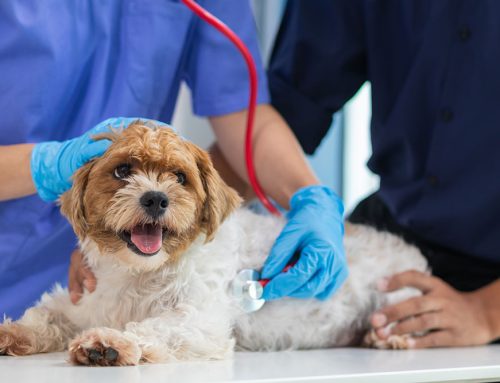A wealth of information is available on the web about puppy health, training, and general upbringing. Unfortunately, with many of the reliable puppy resources comes abundant misinformation. Following are five common myths about puppy raising, and the reasons they aren’t true.
Myth #1: Housetraining comes easily for most puppies
Puppies are notoriously harder to house train than their feline counterparts. Whether you prefer your dog to eliminate outdoors or in a separate area of the home, such as a litter box, you must start the learning process right when you get home. Prepare for accidents, and don’t expect too much of your little pup too soon—housetraining can take four to six months to master, with some dogs taking a year. That being said, some young pooches understand the concept more quickly than others, so be patient, and reward your pet often when they do their deed appropriately. Soon enough, you’ll be enjoying the comforts of sharing your home with a house-trained pup.
Myth #2: Crate training is cruel
Some people equate dog crates to puppy “prison,” but with proper usage, this couldn’t be further from the truth. In fact, when introduced slowly, with a positive connotation, puppy crates can become a warm, welcoming respite for a tired or overwhelmed pup. The key lies in ensuring the crate is always used reasonably and never as punishment. When you bring your puppy home, leave the crate out in a common area with the door always open. Furnish the crate with bedding, toys, and treats so your pet establishes a positive relationship with their crate. When your puppy enters their crate, praise and reward them, and then leave them be. A puppy’s crate should be considered a comfortable rest area, not associated with excitement or stress. However, not every dog or puppy will accept a crate, so use your best judgment when deciding whether a crate is appropriate for your pet.
Myth #3: Any dog food will do
One of the most important things you can do for your growing puppy is offer them a healthy, nutritious diet. This isn’t hard, with the number of suitable choices at your local pet store. However, along with many healthy choices come several not-so-great ones. If you decide on a commercial food for your dog, choose a well-known, well-researched company that adheres to the Association of American Feed Control Officials (AAFCO) standards. Choose a food that is specifically formulated for puppies to ensure proper protein, fat, and carbohydrate ratios for growing bodies. Lastly, do not feed a raw diet, which poses significant safety risks for your young, vulnerable pup.
Myth #4: Obedience training is more important than socialization
It’s certainly no secret that starting basic commands with your pet early can set them up for obedience success later in life. But, did you know that properly socializing your puppy is strongly correlated with well-behaved, confident adult dogs? According to a Vet Med (Auck.) report, “Lack of appropriate early socialization to a range of people and other animals, as well as different environments, can result in adult dogs that exhibit problematic behaviors, such as undesirable aggression and fearfulness.” Inadequate socialization may also prompt owners to relinquish their pets to shelters when undesirable behaviors become too much. Put your pet on the track for social confidence by introducing them to as many different people, places, and pets as safely possible during their sensitive socialization period between 3 and 14 weeks of age. Unfortunately, this time period coincides with a puppy’s vaccine schedule, potentially putting them at risk for an infectious disease, so work with your Liberty veterinarian to decide on your pet’s best socialization plan.
Myth #5: Puppies inherently know how to walk on a leash

If you believe this one, you may be in for a big surprise the first time you strap a collar and leash onto your pup. Most puppies find a collar and leash tugging at their neck a bizarre, uncomfortable, and downright annoying sensation. If you want to raise a dog who walks easily on a leash, start early and slowly. Reward your puppy with a yummy treat when you first put on the collar or harness. If your pup seems truly bothered, you can remove it and try again the next day, working up to longer periods of time. Eventually, they’ll get used to the sensation. Also, work up slowly to attaching the leash, but don’t expect too much too soon. A puppy scratching or attempting to bite at their collar or leash in the early stages is not abnormal, but try to discourage this behavior by distracting them with a treat and rewarding them when they ignore their contraptions.
Still not sure if what you’re reading is fact or fiction when it comes to your new puppy? Contact Liberty Veterinary Hospital for all your puppy questions and concerns, and to set up your first appointment. We can’t wait to watch your little bundle grow.








Leave A Comment